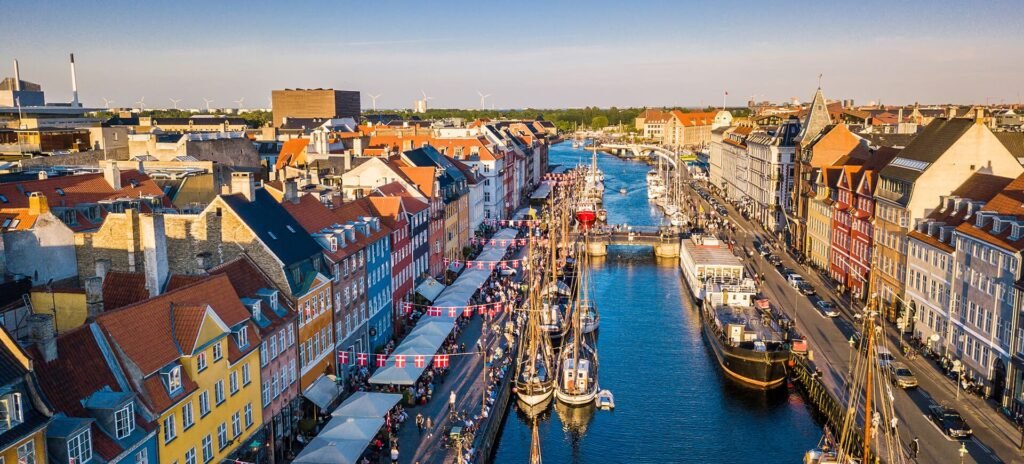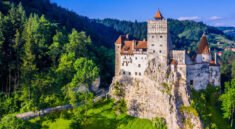
Imagine a place where fairy-tale castles crown misty hilltops, where warm cafes offer a cozy refuge from the chill of northern winds, and where the rhythm of daily life is guided by principles of sustainability, simplicity, and harmony with nature. This is not a fantasy—it’s the heart and soul of many destinations across Europe, where modern living beautifully intertwines with history, culture, and care for the planet.
From the cobblestone streets of Copenhagen and the magical forests of Bavaria, to the quiet corners of Ljubljana and the green innovation of Amsterdam, these destinations invite travelers to slow down, indulge in local flavors, immerse themselves in centuries-old legends, and witness how communities are shaping a greener future. Let us take you on a journey through a Europe that feels both like a storybook and a vision of tomorrow—rich with charm, comfort, and consciousness.
Cozy Cafes: Warmth, Flavor, and Community
One of the most endearing elements of European travel is the café culture. These are not just places to grab a drink—they are havens of warmth, creativity, and human connection.
Copenhagen, Denmark: Hygge in Every Corner
In Copenhagen, the Danish concept of “hygge”—a feeling of comfort, coziness, and well-being—is evident in every café. Picture flickering candlelight, wool blankets draped over chairs, the scent of freshly baked cinnamon buns, and locals chatting over cardamom lattes. At places like Prolog Coffee Bar or The Coffee Collective, sustainable sourcing and minimalist Nordic design create an atmosphere that’s as inviting as it is inspiring.
Many cafes also double as creative spaces, hosting book readings, local art exhibitions, or climate change discussions—reflecting Copenhagen’s identity as a hub for both comfort and conscience.
Vienna, Austria: A Legacy of Coffeehouses
In Vienna, café culture is not just a pastime—it’s an institution. The city’s historic Kaffeehäuser (coffee houses) have been gathering places for philosophers, writers, and revolutionaries for over a century. Think plush interiors, marble tabletops, and the soft clinking of silver teaspoons on porcelain cups.
Try a classic Melange coffee with a slice of Sachertorte at Café Central, where Trotsky and Freud once lingered for hours. These spaces reflect a slower pace of life, encouraging reflection, reading, and rich conversations.
Ljubljana, Slovenia: Lakeside Calm and Artisan Brews
This small, green capital is bursting with charming cafés along the banks of the Ljubljanica River. Outdoor terraces with colorful umbrellas, local musicians, and the smell of wildflower tea and sourdough toast create an idyllic setting. At cafés like TOZD or Stow, you’ll find an emphasis on organic ingredients and fair-trade coffee—highlighting Slovenia’s deep commitment to sustainable living and nature-first thinking.
Fairy Tale Castles: Where Myth and Majesty Collide
The castles of Europe evoke wonder and nostalgia—stories of dragons, queens, and magical forests feel entirely plausible in their presence. While some are grand and royal, others are humble and hidden, offering breathtaking views and ancient legends.
Neuschwanstein Castle, Germany: The Classic Dream
Arguably the world’s most iconic fairy tale castle, Neuschwanstein in Bavaria inspired Walt Disney himself. Nestled among the Alps, its white towers and romantic turrets seem to emerge from a dream. Built by King Ludwig II as a tribute to opera and mythology, it remains one of Germany’s most visited landmarks.
Visitors can explore ornate halls and balconies with views of mountain lakes and green valleys, all while learning about the king’s eccentric vision and artistic obsessions.
Pena Palace, Portugal: A Colorful Hilltop Fantasy
In the forested hills of Sintra, just outside Lisbon, lies the Palácio da Pena—a flamboyant, colorful castle with red, yellow, and purple towers that pop against the misty greenery. The palace mixes Moorish, Gothic, and Renaissance styles, showcasing Portugal’s rich architectural tapestry.
Walking through its gardens, which host over 500 plant species from around the world, you feel the blend of art, nature, and history that defines the area. Sintra is a UNESCO World Heritage site and a prime example of sustainable tourism, limiting visitor numbers to preserve its magic.
Bran Castle, Romania: The Mystery of Dracula
For those who enjoy a touch of the mysterious, Bran Castle in Transylvania is the stuff of legend. Often linked to the Dracula myth, this medieval fortress offers winding staircases, stone walls, and hidden chambers that fuel the imagination.
Yet the real story is far more nuanced. The castle’s history is tied to Queen Marie of Romania and regional folklore, and today it serves as a museum highlighting Romanian culture and peasant life, not just gothic tales.
Sustainable Living: A Way of Life, Not a Trend
Europe has emerged as a global leader in sustainable practices, both in city planning and rural traditions. In these destinations, you’ll see how daily life—from architecture and food to transportation—is aligned with environmental respect and long-term thinking.
Amsterdam, Netherlands: Bicycles and Innovation
Known for its canals and liberal culture, Amsterdam is also one of the greenest cities in the world. Over 60% of trips are made by bicycle, and the city’s network of bike lanes is more extensive than its roads. Electric boats float down the canals, and even the airport uses solar power and energy-efficient systems.
Urban farms, vertical gardens, and zero-waste shops are everywhere. Hotels like Hotel Jakarta and Conscious Hotel Westerpark are built with recycled materials, provide carbon-neutral stays, and grow their own herbs for in-house restaurants.
Stockholm, Sweden: Nature and Minimalism
In Stockholm, sustainability is deeply ingrained in the culture. The city aims to be fossil-fuel-free by 2040, and residents recycle nearly 100% of household waste. Public transportation is run by clean energy, and “eco-districts” like Hammarby Sjöstad model how modern urban living can be both stylish and sustainable.
Restaurants feature foraged ingredients, seasonal menus, and local fish. At Rosendals Trädgård, a garden café on Djurgården Island, you can enjoy farm-to-table cuisine surrounded by apple orchards and flower beds—blurring the line between the city and nature.
Freiburg, Germany: A Green Pioneer
Often referred to as Germany’s “green capital,” Freiburg sits at the edge of the Black Forest and is a model of eco-friendly living. Its Vauban district is entirely car-free, energy-efficient, and built with solar architecture.
The city promotes community-based farming, local artisan markets, and pedestrian-only zones. Even public buildings are covered in greenery or equipped with solar panels. Freiburg proves that environmentalism and high quality of life go hand in hand.
Traveling Mindfully: How Visitors Can Engage
Travelers exploring this fairy-tale and eco-friendly side of Europe can do more than admire from afar. Here are a few ways to participate in sustainable and meaningful experiences:
- Choose eco-certified accommodations: Many hotels and hostels now have certifications for sustainability, energy usage, and fair labor practices.
- Support local artisans: Instead of mass-produced souvenirs, seek out handmade crafts, traditional foods, and local art.
- Use green transportation: Opt for trains, bicycles, and walking tours instead of short-haul flights and taxis.
- Engage with nature respectfully: Whether hiking in castle gardens or national parks, follow trails, minimize waste, and avoid disturbing wildlife.
- Learn from locals: Take part in workshops about herbal medicine, traditional cooking, or sustainable farming. These experiences enrich your trip and foster intercultural exchange.
Conclusion: A Harmonious Blend of Past and Future
Traveling through a world of cozy cafés, fairy tale castles, and sustainable living is like stepping into a narrative where comfort, wonder, and wisdom coexist. It’s a reminder that beauty doesn’t have to come at the expense of the planet—and that heritage and innovation can live side by side.
As we sip tea under wooden beams, gaze upon turreted skylines, or pedal through car-free cobblestone streets, we realize that the most memorable journeys are those that connect us not only to a place, but to the values and stories that shape it.
This Europe—warm, whimsical, and wise—isn’t just a destination. It’s an invitation to live more thoughtfully, travel more meaningfully, and dream more vividly.




